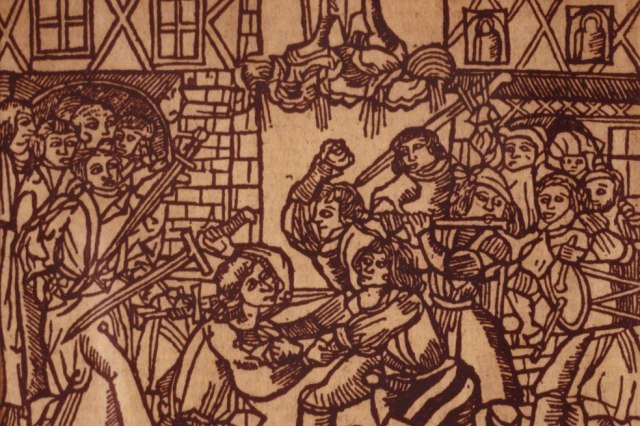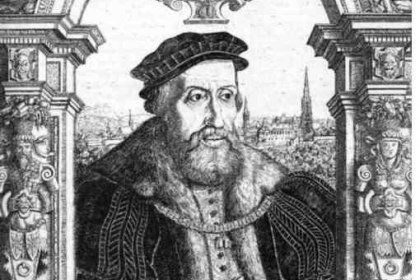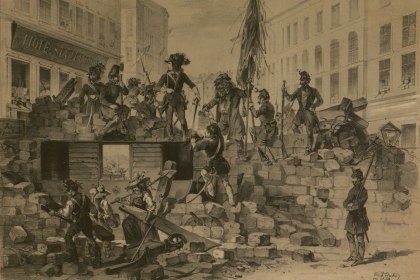Breaks, crises and conflicts
With its 650 years of history, the University of Vienna is one of the oldest and most influential institutions in Austria. The fact that it has continuously existed as a site of higher education, scholarship and science since the late Middle Ages until today can easily lead to a perception of continuities in its history. In fact, however, the university’s history is riddled with breaks, new beginnings, existence-threatening crises and phases of stagnation. Political and religious conflicts that were fought on academic ground as well as societal change influenced its development.
The foundation in 1365 already was a gamble that had no guarantee of an assured and continuous development of the university. Only the readjustments in 1384 more or less secured an economical and infrastructural basis. As was the case at other European university locations, the medieval and early modern daily life at the Viennese university was shaped by sometimes bloody conflicts with the city and its inhabitants.
With the spread of the Reformation in the early 16th century came a dramatic drop in matriculation numbers. Thanks to an intervention by the local regent, the university’s continued existence was secured, but it came at the price of the autonomy it had enjoyed in the Middle Ages. It was expected of the university to do its part in safeguarding the Catholic faith. In 1623 the teaching duties were largely handed over to the Society of Jesus.
During the time of enlightened absolutism the Jesuits’ influence on studies was gradually pushed back, until the order was (temporarily) abolished in 1773. Finally even Protestants and Jews were admitted to the university. University education was reformed and placed under state supervision. At that time, the university’s goal was not meant to be scientific innovation, but the training of “valuable” subjects.
The political stagnation of the Vormärz era had a negative impact on the university’s development. Students and academics, dissatisfied with the conditions, significantly shaped the 1848 revolution. One of the few accomplishments that survived the suppression of the revolution was the freedom of teaching and learning they had fought for.
Political and societal crises in the late 19th and early 20th century Habsburg Empire also influenced conflicts at the university. Many hurdles had to be overcome before women were allowed to study. Liberal and democratic ideologies were increasingly on the defensive, while German nationalism and anti-Semitism were on the rise – particularly in academic and student settings.
This development was aggravated after the fall of the monarchy and contributed to the smoothly executed “cleansing” of the university in 1938, when politically inconvenient and Jewish students and teachers were quickly expelled. Only few survivors returned to the university after 1945. At first, denazification was undertaken vigorously, but soon “Minderbelastete” (“lesser offenders”) among the professors were allowed back to their positions.
The financial upturn in the time of the “economic miracle” facilitated the development of a new middle class that sought university education for its children and thus caused an “educational boom”. Matriculation numbers rose dramatically, as did the number of female students. Even though the movement of 1968 only was a “tame revolution” in Vienna, the students and non-professorial teaching staff received more say in university matters with the Universitätsorganisationsgesetz (university organization law) of 1975. Until today, the transformation into a mass university presents challenges to be overcome.
One of the most important changes in the institutional history of the University of Vienna was the implementation of the Universitätsgesetz (university law) in 2002. It fulfilled demands for more university autonomy and separated the medical faculty from the University of Vienna, making it an independent university (valid from January 1, 2004). It also brought about the departure from a “committee university” and assigned tasks to the university that had formerly been held by the state.
-
The beginnings of the Alma Mater Rudolphina
-
“Fossen” and “Partekenfresser”
15th Cent.–16th Cent. -
University reforms under Ferdinand I.
1521–1554 -
The Society of Jesus and the University of Vienna
1551–1773 -
„What approaches with bold strides?“
1848 -
Anti-Semitism at the University of Vienna
1421–2006 -
Dealing with National Socialism after 1945
1945–2015








